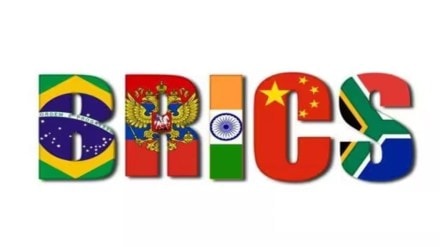Prime Minister Narendra Modi is set to attend the 17th edition of the BRICS summit in Rio de Janeiro, Brazil over the weekend. Anvitii Rai explores how the group’s dynamics could unfold in the near future and where India stands with its current geopolitical stance
What is the BRICS grouping?
In its current form, the BRICS grouping comprises original members Brazil, Russia, India, China, and South Africa, with Egypt, Ethiopia, Iran, the United Arab Emirates (UAE) and Indonesia included over the years. BRICS is an informal bloc of nations which represents more than 40% of the world’s population and more than a third of global economic growth (based on purchasing power parity), exceeding the G7 nations. The term ‘BRIC’ was coined by Goldman Sachs economist Jim O’Neill in 2001, identifying the mentioned nations as fast-growing economies with the potential to become global economic powers by 2050. Although it does not have a founding treaty, the bloc has done significant work over the years through collaboration — such as the establishment of the World Bank alternative New Development Bank and mutual trade that has crossed $1 trillion. In a US-led world order, it is seen as a security measure by non-Western nations to safeguard their interests—it was labelled “the first-ever transregional association of non-Western States” by the Brazilian Center for International Relations (CEBRI) last week.
Why is the BRICS summit important?
The first BRICS leaders’ summit was held in Russia’s Yekaterinburg in 2009, and since then, as the group’s presidency rotates every year, the presiding nation has acted as host to the summit. Over the years, many significant declarations and events have occurred at these summits— in 2014, the Fortaleza Declaration was adopted (Brazil), marking the establishment of the New Development Bank (NDB); in 2015, The Ufa Declaration was adopted (Russia), affirming the members’ cooperation to combat international terrorism; and in 2022, the Beijing Declaration was adopted (China), where member nations agreed to support talks between Russia and Ukraine. This year, the overarching theme is ‘Strengthening Global South Cooperation for Inclusive and Sustainable Governance’, and talks are set to take place around energy transition, cooperation on vaccines, and expanding most-favoured nation status to all countries in the World Trade Organisation.
Current member dynamics
Since its inception, BRICS has been a bloc of diverse political ideologies and social structures. Thus, naturally, there have been internal tensions within the group—the Indo-Chinese rivalry has been simmering for quite a while. Moreover, while India and Brazil advocate for multilateralism, China and Russia have been pushing for BRICS to become an anti-Western hegemony measure. This was felt when membership was expanded to Egypt, Ethiopia, Iran, Saudi Arabia and the UAE in 2023, and according to Chatham House, “At the time, observers and the more democratic members of the coalition privately expressed concern that the additions, many of them advocated by China, were made too fast and skewed the bloc towards autocracies.” India has also been vigilant against any ally of neighbour and rival Pakistan joining the grouping, as it vetoed Türkiye’s membership. Additionally, as members have different geopolitical interests, they are less likely to see eye to eye on many aspects.
India’s stand & the BRICS agenda
India has advocated for a multilateral stance, and has been careful to avoid the “anti-Western” label; perhaps the most telling fact of the same is that as PM Modi embarked to attend the Summit along with a tour of nations including Trinidad and Tobago and Ghana, Union external affairs minister S Jaishankar attended the Quad’s (Japan, India, Australia, the US, touted as a grouping to counter Chinese influence) foreign minister meeting in Washington. For India, the aim has always been a balancing act, especially in the current multipolar global climate. However, it does deter from the BRICS agenda in some ways—it has not been eager to entertain the idea of a BRICS currency in the face of US President Donald Trump‘s tariff threats. Mistrust with China has widened too—India refused to sign the outcome document at the recent conclave of the defence ministers of the Shanghai Cooperation Organisation at Qingdao, as it did not include the recent Pahalgam terrorist attack.
In the current situation, what could be the future of the grouping?
Many countries have been vying to join the bloc, and it has also sought members seeking greater alignment with other fast-growing economies. Belarus, Bolivia, Cuba, Kazakhstan, Malaysia, Nigeria, Thailand, Vietnam, Uganda, and Uzbekistan are now the BRICS partner countries. Countries which have expressed interest in joining include Bangladesh, Pakistan, Sri Lanka, Kuwait, etc, and Saudi Arabia, with its close ties to the US, has not made a final call yet, even as it was slated to join last year. With the current geopolitical order, many nations are wary of either the US or China gaining dominance, and the US is wary of nations grouping against it as well. This can be added to intra-member conflicts such as the Indo-China mistrust as well as contentions over the Nile. Considering all this, experts have opined that the group must focus sharply on diplomacy and long-standing goals for meaningful collaboration.
